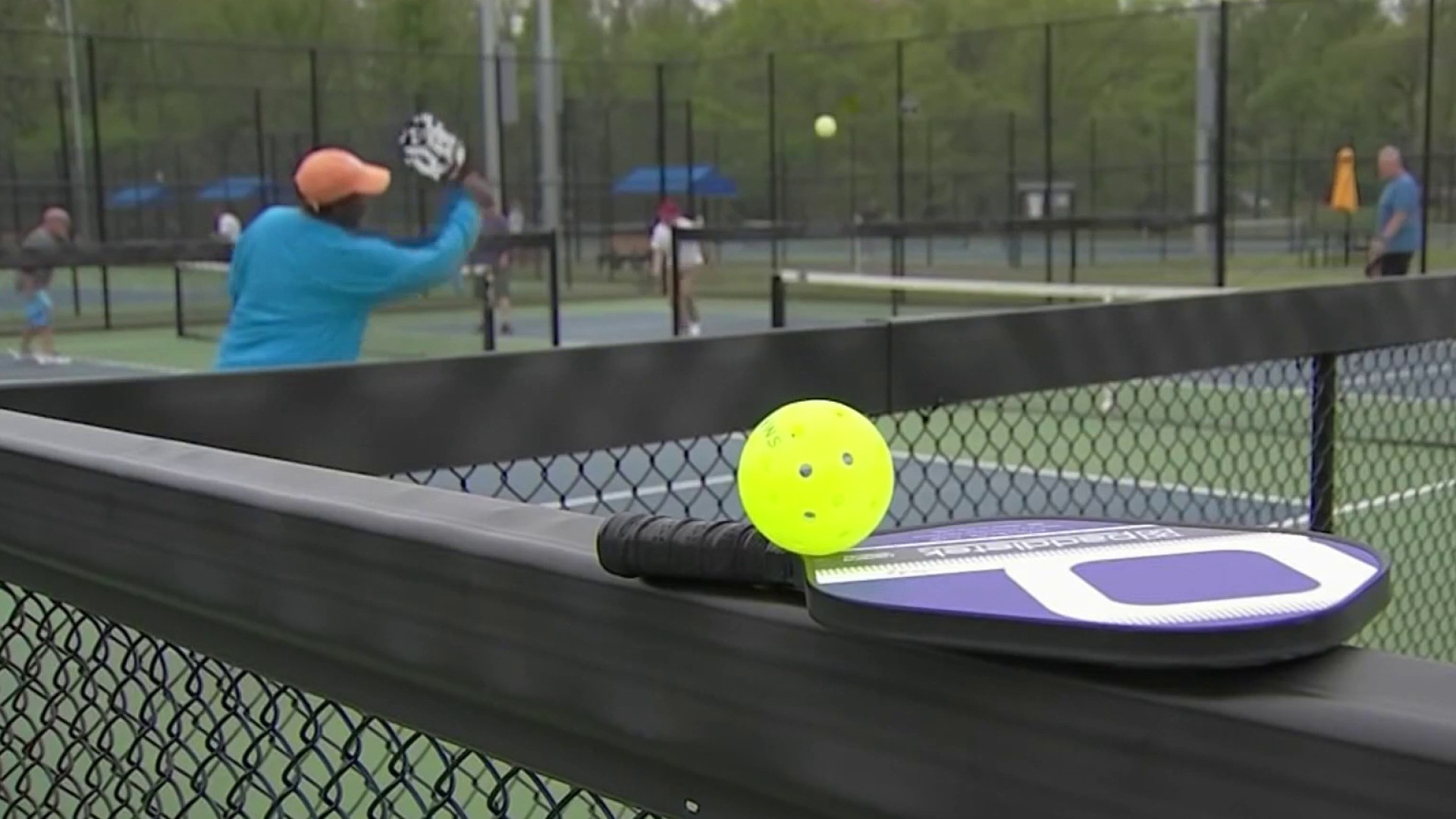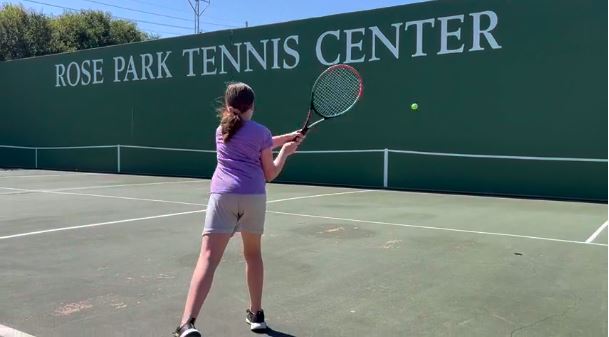Pickleball does not damage tennis courts when played responsibly and following proper court usage guidelines. However, the repeated impact from pickleball balls hitting the surface of a tennis court can lead to marks or scuffs over time.
Myth: Pickleball Leads To Tennis Court Damage
htmlThere is a common misconception that playing pickleball on tennis courts can lead to extensive damage. However, it is essential to separate fact from fiction when it comes to understanding the impact of pickleball on tennis court surfaces. Let’s take a closer look at the truth behind this myth.
Pickleball And Tennis Court Damage: Separating Fact From Fiction
Contrary to popular belief, pickleball does not damage tennis courts when played responsibly with the appropriate equipment and by following proper court usage guidelines. While pickleball balls hitting the surface of a tennis court can lead to marks or scuffs over time, the damage is minimal and can easily be repaired.
In fact, both sports – pickleball and tennis – share similar characteristics in terms of the impact on court surfaces. Tennis players frequently slide, pivot, and stop suddenly, which can cause wear and tear on the court. Similarly, pickleball players engage in quick movements and the occasional shuffle step, but the overall impact is relatively mild compared to tennis.
To ensure that minimal damage occurs, it is recommended to use appropriate pickleball paddles and balls designed specifically for outdoor play. These pickleball-specific gear materials help reduce the potential for surface scuffing on tennis courts, making it a win-win for both sports enthusiasts.
Proper Maintenance For Long-lasting Tennis Courts
Proper tennis court maintenance is key to preventing any damage caused by pickleball or tennis. Regular resurfacing and maintenance routines, including patching up any minor imperfections, sealing cracks, and applying new surface coatings, help prolong the lifespan of both tennis and pickleball courts.
In addition, it is important to establish clear court usage guidelines and enforce them regularly. By educating players about the potential impact on court surfaces and promoting responsible play, both pickleball and tennis enthusiasts can enjoy their favorite sports without any long-term consequences for the courts.
In conclusion, the myth that pickleball leads to significant damage to tennis courts is unfounded. By playing responsibly, using appropriate gear, and following proper maintenance routines, both sports can coexist harmoniously without causing excessive wear and tear on court surfaces.

Credit: www.nbcphiladelphia.com
Understanding The Impact Of Pickleball On Tennis Courts
Pickleball has gained immense popularity in recent years, captivating people of all ages with its unique blend of tennis, badminton, and ping pong. However, as more and more players take to tennis courts to enjoy this fast-paced sport, concerns about potential damage to the court’s surface have arisen. In this blog post, we will delve into the impact of pickleball on tennis courts, shedding light on the surface materials and ball and paddle materials that play a crucial role in court durability.
Surface Materials: How They Affect Court Durability
The type of surface material used in constructing a tennis court has a significant impact on its overall durability. Tennis courts can be made of various materials, including asphalt, concrete, and acrylic. Each material possesses unique characteristics that influence its resistance to wear and tear.
For instance, asphalt courts are commonly found in many recreational facilities due to their affordability and ease of installation. However, they may not be as resilient to the strenuous demands of pickleball. The repeated impact of pickleball balls and the quick side-to-side movements of players can cause surface cracks and unevenness over time, compromising the longevity of the court.
On the other hand, concrete and acrylic courts offer greater durability and are better suited for accommodating the demands of pickleball. These surfaces are designed to withstand heavy usage and provide enhanced shock absorption, reducing the risk of damage from the intense gameplay.
The Role Of Ball And Paddle Material In Court Damage
While the surface material of the tennis court plays a vital role in its durability, the type of ball and paddle used in pickleball also affects the potential damage to the court. Pickleballs are typically made of plastic or composite materials, and their hardness can vary.
Harder pickleballs made of plastic have a higher likelihood of leaving marks or scuffs on the court’s surface with repeated impacts. Composite pickleballs, on the other hand, are generally softer and less likely to cause visible damage to the court.
Similarly, paddle materials can impact court damage. Paddles made of heavier, denser materials tend to exert more force on the ball, potentially increasing the chances of damage. It is essential to use paddles with softer cores and protective edge guards to minimize the impact on the court surface.
Debunking The Common Misconceptions
htmlThere is a common misconception that playing pickleball on a tennis court can cause damage. However, this is not entirely true. While it is possible for pickleball to leave marks on a tennis court, proper gameplay techniques and court maintenance can prevent any significant damage. In this section, we will debunk some of the common misconceptions surrounding pickleball and tennis court damage.
Pickleball Court Markings: Temporary Vs Permanent Solutions
One misconception is that the markings used for pickleball on tennis courts can cause damage. There are two main types of court markings: temporary and permanent solutions.
Temporary court markings, such as tape or chalk, are commonly used to designate pickleball lines on a tennis court. These markings can easily be removed or replaced without causing any permanent damage to the court surface. Players should ensure that the tape or chalk used is appropriate for tennis court surfaces and does not leave behind any residue that could affect gameplay or aesthetics.
On the other hand, permanent court markings involve the use of paint or specialized coatings to create pickleball lines on a tennis court. These markings are more durable and long-lasting but may require professional installation. It is important to choose high-quality products for permanent court markings to minimize any potential damage to the court surface.
Table: Temporary vs Permanent Court Markings
| Temporary Court Markings | Permanent Court Markings |
|---|---|
| Easy to remove or replace | Durable and long-lasting |
| No permanent damage to the court surface | Potential for minimal damage if not installed properly |
| Use tape or chalk | Require paint or specialized coatings |
Evaluating The Effectiveness Of Court Maintenance
Another misconception is that pickleball inherently damages tennis courts. However, proper court maintenance plays a crucial role in preventing any damage caused by pickleball play.
Regular cleaning and resurfacing of tennis courts help maintain their integrity and longevity. By addressing cracks, uneven surfaces, or other issues promptly, the court can withstand the impact of pickleball play without sustaining any damage.
Court usage guidelines should also be followed to minimize the risk of damage. This includes using appropriate footwear, avoiding dragging or scraping feet, and preventing the use of excessive force during gameplay.
- Regular cleaning and resurfacing
- Addressing cracks and uneven surfaces
- Following court usage guidelines
Best Practices For Preserving Tennis Courts
htmlBest Practices for Preserving Tennis Courts
Proper Court Usage: Guidelines And Recommendations
Tennis courts are valuable assets that require proper care and maintenance to ensure longevity. To preserve the quality and lifespan of tennis courts, it is essential to follow guidelines and recommendations for proper court usage.
Here are some best practices to consider:
- Use appropriate tennis footwear that is designed specifically for court surfaces to minimize damage from excessive wear and tear.
- Avoid dragging or sliding feet on the court, as it can cause surface abrasions and damage the playing area.
- Refrain from hitting the racquet against the court surface, as it can leave marks and potentially damage the court.
- Do not bring food, beverages, or gum onto the court, as spills can stain and degrade the playing surface.
Following these guidelines will not only protect the court but also improve your playing experience.
Mitigating Potential Damage: Tips For Players And Court Owners
Although pickleball can leave marks on tennis courts, there are measures players and court owners can take to mitigate potential damage:
- Place protective court mats or overlays on high-traffic areas, such as the baseline and service areas, to reduce the impact of pickleball play.
- Consider installing dedicated pickleball courts adjacent to tennis courts, allowing players to enjoy both sports without any concerns of damage.
- Regularly inspect the court surface for any signs of wear or damage and undertake necessary repairs promptly.
- Apply a specialized court finish or resurface the court periodically to maintain its quality and protect against pickleball-related damage.
By implementing these tips, players can continue enjoying the game of pickleball while minimizing the potential impact on tennis courts. Court owners can also ensure their facilities remain in excellent condition for all players.
Frequently Asked Questions Of Does Pickleball Damage Tennis Courts
Can You Play Pickleball On A Regular Tennis Court?
Playing pickleball on a regular tennis court does not damage the court.
Can You Put Two Pickleball Courts On One Tennis Court?
Yes, you can put two pickleball courts on one tennis court without damaging it.
Are There More Injuries In Pickleball Or Tennis?
There are fewer injuries in pickleball compared to tennis due to the smaller court size and underarm serving.
How Do You Draw Pickleball Lines On A Tennis Court?
Playing pickleball on a tennis court does not damage the court. You can draw pickleball lines on the tennis court by following proper court usage guidelines.
Conclusion
While pickleball can leave marks or scuffs on tennis courts over time, it does not cause significant damage when played responsibly with appropriate equipment. Contrary to popular misconceptions, there is no need to worry about the integrity of tennis courts when incorporating pickleball.
With proper court usage guidelines and consideration, both sports can coexist and thrive without compromising the functionality and longevity of tennis courts.

